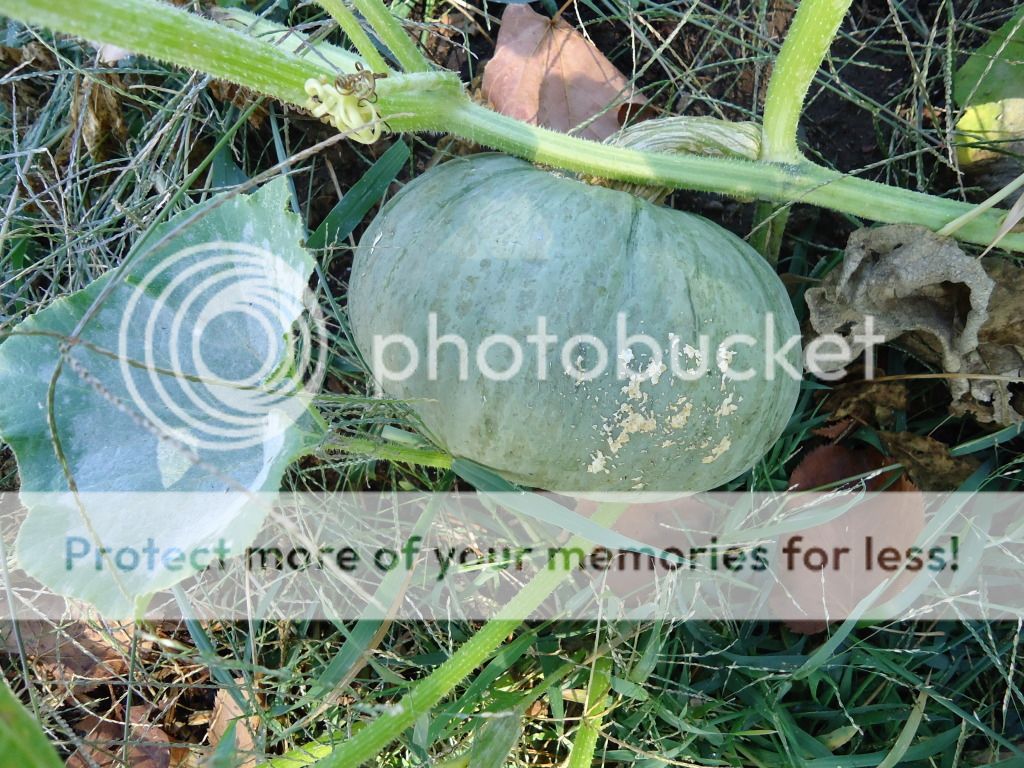October is here, how did that happen? Time seems to have flown, summer is gone, and now we have chilly air and blaze-orange trees--a perfect time of the year to make some fall-flavored treats!
We had an abundance of kabocha squash in our garden this year. Kabocha is similar to butternut squash in taste and texture, but looks kinda like a green pumpkin in appearance:
This squash seemed perfect for making fruit leather (or fruit roll-ups as some call them). Fruit leather is simply pureed and dehydrated fruit (or vegetables in the case of squash). Once it is dehydrated, it can be cut into strips and rolled up, making for a portable and excellent tasting snack. The sugar becomes concentrated once the fruit is dehydrated, making it sweet, but without the high fructose corn syrup like the ones you buy at the store.
You could actually puree your squash and dehydrate it plain--it would be tasty--but, being in the Autumn-y mood I was, I decided to try a pumpkin pie version of fruit leather. You can use a home dehydrator with a fruit leather tray if you have one, but if not, your oven should work just as well.
Pumpkin Pie Fruit Leather
1 cup pureed winter squash, such as pumpkin, kabocha, or butternut
1 cup applesauce
1 teaspoon pumpkin pie seasoning (or your own blend of cinnamon, ginger, nutmeg, and allspice)
1-2 Tablespoons honey (optional)
Combine ingredients in a medium sized bowl.
If you are using a home dehydrator, pour the mixture into a lightly oiled fruit leather tray. The puree should be about 1/4" thick. Dehydrate at 135 degrees F for four to eight hours, or until the puree is no longer wet or sticky, but still pliable.
If you will be drying in an oven, line a baking sheet with parchment paper. Set your oven to its lowest temperature--usually, this is around 150 degrees F. Spread the puree over the parchment paper at a 1/4" thickness. Bake for three to twelve hours, until the puree is no longer wet or sticky, but still pliable, and can be peeled from the parchment paper. You'll want to check periodically to be sure the leather doesn't become too dried out.
Cut the fruit leather into wedges or strips, and roll them up by placing a piece of leather on an equal sized piece of parchment paper, and then rolling. Store in an airtight container, in a cool, dry place. These should keep for about a month, but they probably wont last that long anyway.
And now for our fall hike...
Now, it would have been a great idea to make some of those Pumpkin Pie Fruit Leathers before our hike on Sunday, but instead I ended up doing it after we got back. Despite our lack of fruit leather, our Sunday hike at Timm's Hill in northern Wisconsin was a great time.
Timm's hill is Wisconsin's highest geographic point. At 1,951.5 feet above sea level, it may not seem that high to those living in more mountainous areas, but to us flat-landers, it's pretty impressive. It sure left me breathless when I got to the top, and not just because I'm five months pregnant and we took a long hike around the hill before actually climbing to the top--the view is magnificent!
Just don't look down!
We started by taking the park loop around the hill. It was a mild autumn day, which made for a beautiful stroll through the trees.
As we walked along this trail, we passed Timm's Lake, looking beautiful in the autumn sun.
While walking, we noticed an arrowed sign pointing the way to a Prayer Cabin, so we decided to check it out. This put us about a half mile from the hill, down a dirt road leading to the cabin. The cabin was on top of a big hill (so many hills, pant, pant).
I'm not sure exactly what the story is behind this cabin. Inside, you will find a couch and love seat, with a coffee table in the middle of it all, displaying some Holy Bibles. On the walls, quotes from scripture are neatly carved all around. There is a ladder, leading to a second story loft as well. This was a great place to catch my breath and admire the view (and a good chance for the kids to be camera hams).
After resting for a bit, we headed back toward Timm's hill.
By this point, I was getting a bit sweaty and dreaming about my sub sandwich waiting for me in the cooler. But we kept on, until we reached the observation tower at the top of Timm's Hill.
Then the climb up the stairs began. It was unusually crowded on the day we came for our hike; I guess we weren't the only ones intrigued by the autumn-view the tower would offer. We had to fight our way up the stairs while others were making their way down. But eventually, we made it to the top, and lo and behold, my aching legs were forgotten as I gazed out over countryside.
A nice lady even offered to take a picture of our family for us at the top.
It was crowded at the top of the tower, so we made our way down sooner than I would have liked. The hike back was easy, though walking down a steep hill does present it's own challenges, and we were back to the picnic area in no time, where my sub sandwich was hungrily devoured.



















well worth all the hard work...beautiful photos...love the family photo...you don't even looked winded or sweaty..
ReplyDeleteThank you Deb :) Luckily, there was a cool breeze at the top of the tower to cool me off.
Delete